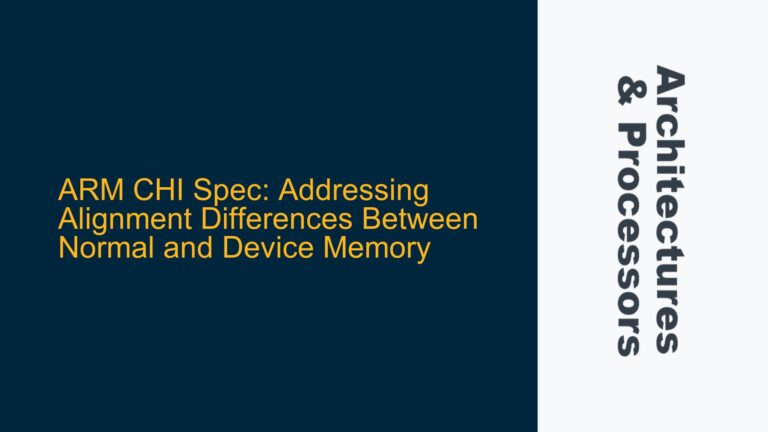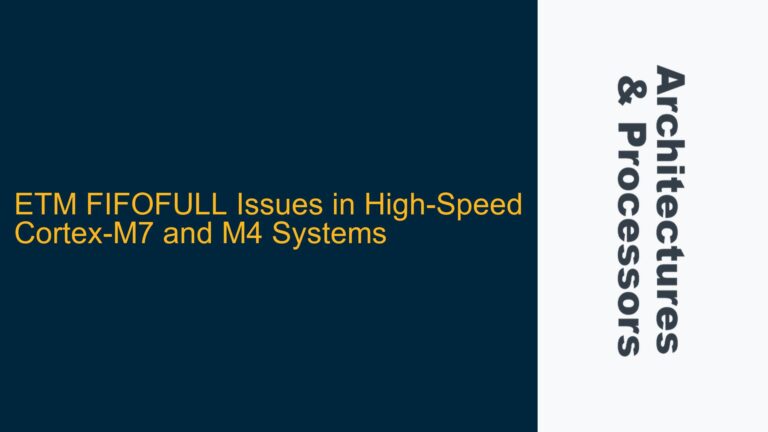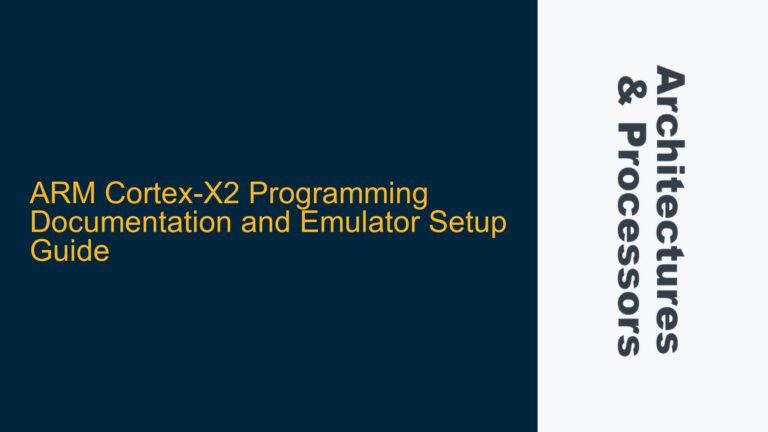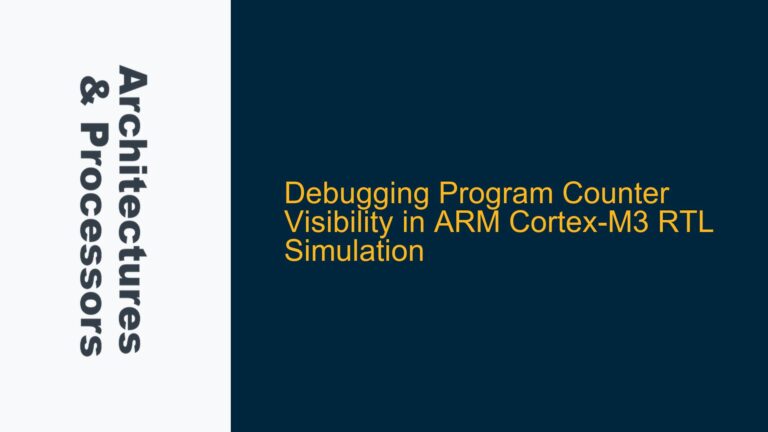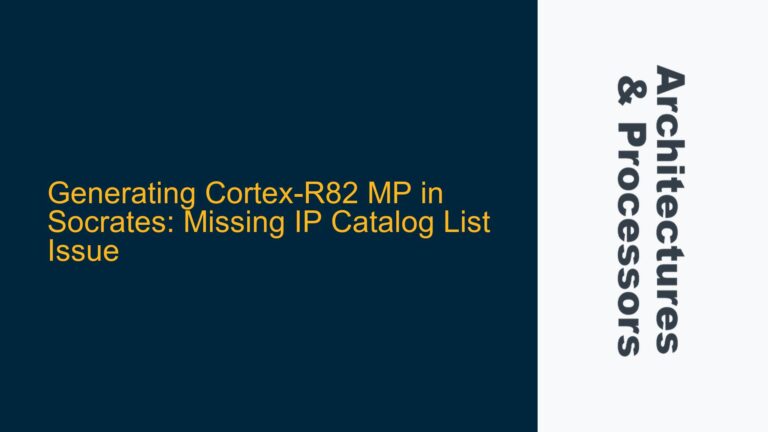AHB ERROR Response and Transfer Continuation Scenarios
In the ARM AMBA AHB protocol, the handling of ERROR responses during burst transfers is a critical aspect of ensuring robust communication between masters and slaves. When a slave responds with an ERROR, the master has the option to either cancel the remaining transfers in the burst or continue with the transfer. The specification allows for flexibility in this regard, but it also imposes specific rules on how the master should behave depending on the current state of the transfer and the type of burst being executed.
The AHB protocol defines four types of transfer types: IDLE, BUSY, NONSEQ, and SEQ. Each of these transfer types has specific rules governing their use, especially in the context of ERROR responses. When a slave responds with an ERROR, the master must adhere to these rules to ensure protocol compliance. The ERROR response effectively acts as a wait state, where the slave holds HREADY low for a cycle, delaying the transfer. However, the master’s behavior in response to this ERROR is constrained by the current transfer type and the burst type.
For instance, if the master is executing a fixed-length burst and the slave responds with an ERROR, the master must decide whether to continue or cancel the burst. If the master chooses to continue, it must maintain the same transfer type (SEQ or NONSEQ) as was present before the ERROR response. If the master chooses to cancel the burst, it must transition to an IDLE transfer type. This behavior is strictly regulated by the AHB specification to ensure that the bus fabric remains in a consistent state.
Master Behavior Constraints During ERROR Response
The master’s behavior during an ERROR response is constrained by the current transfer type and the burst type. The AHB specification outlines specific rules for how the master should behave in different scenarios. These rules are designed to ensure that the bus fabric remains in a consistent state and that the transfer can either be continued or canceled without causing protocol violations.
When the slave responds with an ERROR, the master must consider the current transfer type (HTRANS) and the burst type (fixed-length or undefined-length). The master’s options for continuing or canceling the transfer are determined by these factors. For example, if the master is executing a fixed-length burst and the slave responds with an ERROR, the master must maintain the same transfer type (SEQ or NONSEQ) if it chooses to continue the burst. If the master chooses to cancel the burst, it must transition to an IDLE transfer type.
In the case of an undefined-length burst, the master has more flexibility in its response to an ERROR. The master can choose to continue the burst by maintaining the same transfer type (BUSY or SEQ) or cancel the burst by transitioning to an IDLE transfer type. However, the master cannot transition from a BUSY transfer type to a SEQ transfer type in an undefined-length burst, as this would violate the AHB protocol.
The AHB specification also provides specific rules for how the master should behave when the slave is in a wait state. When the slave holds HREADY low, the master must not change the transfer type except as described in the IDLE and BUSY transfer rules. This rule applies even when the slave responds with an ERROR, as the ERROR response effectively acts as a wait state.
Implementing Correct HTRANS Behavior After ERROR Response
To ensure correct behavior after an ERROR response, the master must implement logic that adheres to the AHB specification’s rules for transfer continuation or cancellation. This logic must consider the current transfer type, the burst type, and the slave’s response (ERROR or OKAY). The master’s state machine must be designed to handle these scenarios correctly to avoid protocol violations and ensure robust communication.
When the slave responds with an ERROR, the master must first determine whether to continue or cancel the burst. If the master chooses to continue the burst, it must maintain the same transfer type (SEQ or NONSEQ) as was present before the ERROR response. If the master chooses to cancel the burst, it must transition to an IDLE transfer type. This decision must be made based on the current transfer type and the burst type.
For example, if the master is executing a fixed-length burst and the slave responds with an ERROR, the master must maintain the same transfer type (SEQ or NONSEQ) if it chooses to continue the burst. If the master chooses to cancel the burst, it must transition to an IDLE transfer type. This behavior is strictly regulated by the AHB specification to ensure that the bus fabric remains in a consistent state.
In the case of an undefined-length burst, the master has more flexibility in its response to an ERROR. The master can choose to continue the burst by maintaining the same transfer type (BUSY or SEQ) or cancel the burst by transitioning to an IDLE transfer type. However, the master cannot transition from a BUSY transfer type to a SEQ transfer type in an undefined-length burst, as this would violate the AHB protocol.
The master’s state machine must also handle the case where the slave is in a wait state. When the slave holds HREADY low, the master must not change the transfer type except as described in the IDLE and BUSY transfer rules. This rule applies even when the slave responds with an ERROR, as the ERROR response effectively acts as a wait state.
To implement this behavior correctly, the master’s state machine must include logic to detect the slave’s response (ERROR or OKAY) and determine the appropriate transfer type based on the current transfer type and burst type. The state machine must also include logic to handle the transition to an IDLE transfer type if the master chooses to cancel the burst.
In summary, the master’s behavior after an ERROR response is constrained by the AHB specification’s rules for transfer continuation or cancellation. The master must implement logic that adheres to these rules to ensure protocol compliance and robust communication. This logic must consider the current transfer type, the burst type, and the slave’s response (ERROR or OKAY) to determine the appropriate transfer type and ensure that the bus fabric remains in a consistent state.
Detailed Analysis of HTRANS Options After ERROR Response
The AHB protocol provides specific rules for how the master should behave after an ERROR response, depending on the current transfer type and burst type. These rules are designed to ensure that the bus fabric remains in a consistent state and that the transfer can either be continued or canceled without causing protocol violations.
When the slave responds with an ERROR, the master must consider the current transfer type (HTRANS) and the burst type (fixed-length or undefined-length). The master’s options for continuing or canceling the transfer are determined by these factors. For example, if the master is executing a fixed-length burst and the slave responds with an ERROR, the master must maintain the same transfer type (SEQ or NONSEQ) if it chooses to continue the burst. If the master chooses to cancel the burst, it must transition to an IDLE transfer type.
In the case of an undefined-length burst, the master has more flexibility in its response to an ERROR. The master can choose to continue the burst by maintaining the same transfer type (BUSY or SEQ) or cancel the burst by transitioning to an IDLE transfer type. However, the master cannot transition from a BUSY transfer type to a SEQ transfer type in an undefined-length burst, as this would violate the AHB protocol.
The AHB specification also provides specific rules for how the master should behave when the slave is in a wait state. When the slave holds HREADY low, the master must not change the transfer type except as described in the IDLE and BUSY transfer rules. This rule applies even when the slave responds with an ERROR, as the ERROR response effectively acts as a wait state.
To implement this behavior correctly, the master’s state machine must include logic to detect the slave’s response (ERROR or OKAY) and determine the appropriate transfer type based on the current transfer type and burst type. The state machine must also include logic to handle the transition to an IDLE transfer type if the master chooses to cancel the burst.
In summary, the master’s behavior after an ERROR response is constrained by the AHB specification’s rules for transfer continuation or cancellation. The master must implement logic that adheres to these rules to ensure protocol compliance and robust communication. This logic must consider the current transfer type, the burst type, and the slave’s response (ERROR or OKAY) to determine the appropriate transfer type and ensure that the bus fabric remains in a consistent state.
Conclusion
The handling of ERROR responses in the AHB protocol is a complex but critical aspect of ensuring robust communication between masters and slaves. The AHB specification provides specific rules for how the master should behave after an ERROR response, depending on the current transfer type and burst type. These rules are designed to ensure that the bus fabric remains in a consistent state and that the transfer can either be continued or canceled without causing protocol violations.
To implement this behavior correctly, the master’s state machine must include logic to detect the slave’s response (ERROR or OKAY) and determine the appropriate transfer type based on the current transfer type and burst type. The state machine must also include logic to handle the transition to an IDLE transfer type if the master chooses to cancel the burst.
By adhering to these rules and implementing the appropriate logic, designers can ensure that their AHB-based systems are robust, compliant, and capable of handling ERROR responses correctly. This, in turn, ensures that the system as a whole operates reliably and efficiently, even in the face of unexpected errors.

